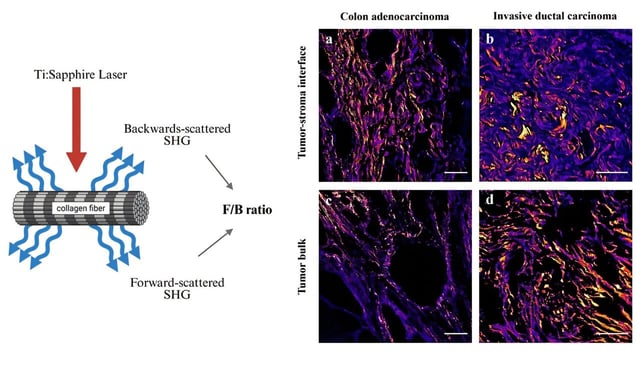Overview
- Researchers at the University of Rochester used second‐harmonic generation imaging to examine collagen fibers in invasive ductal carcinoma and stage I colon adenocarcinoma samples from more than 300 Black and White patients.
- The team measured forward‐to‐backward (F/B) scattering ratios and fiber angle variability (FAV) at the tumor‐stroma interface to assess metastasis risk markers.
- Black breast cancer patients showed significantly lower F/B ratios in the tumor‐stroma interface—a pattern linked to higher metastasis risk—while Black colon cancer patients exhibited higher F/B ratios.
- Fiber angle variability did not differ by race in either cancer type, indicating that not all collagen features contribute to observed outcome disparities.
- The authors call for greater inclusion of underrepresented groups in clinical trials to ensure that prognostic tools are effective for all racial backgrounds.
